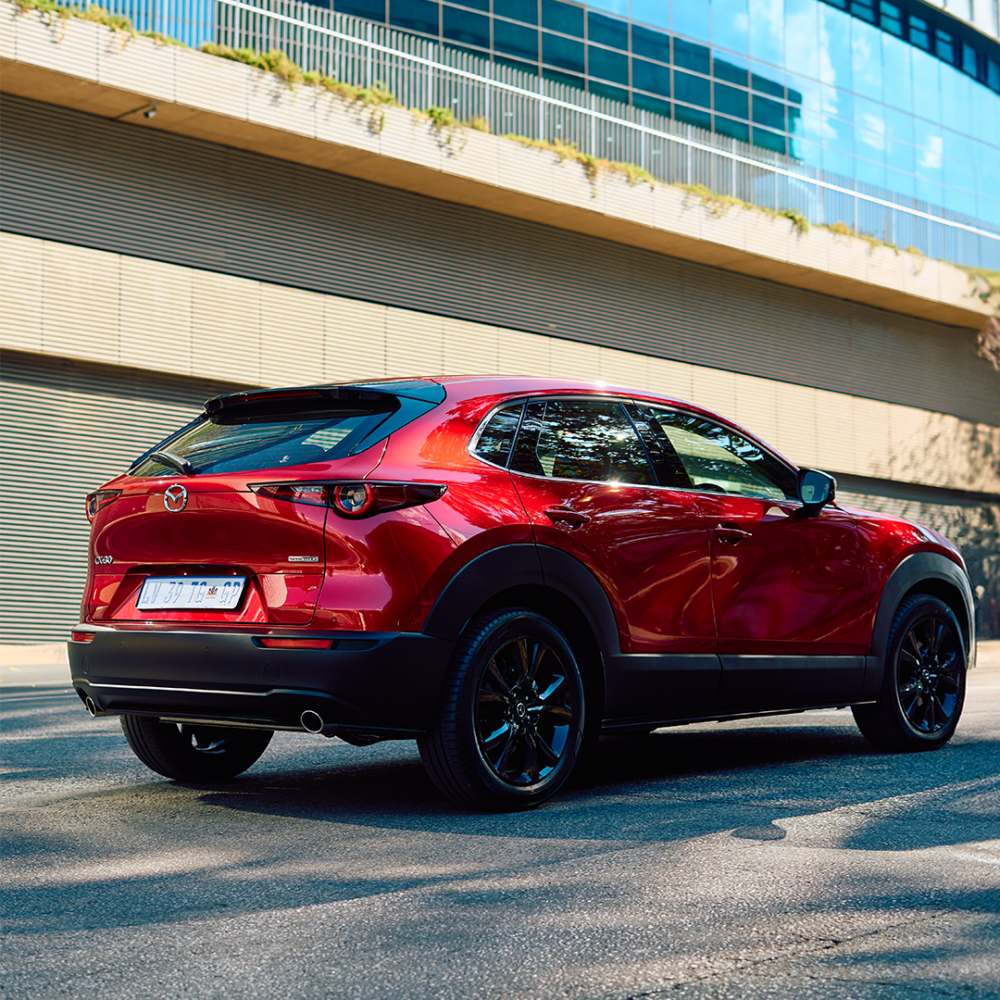The Mazda CX-30 sports a coupe-like front.
Mazda sales figures have declined terribly since the Covid-19 pandemic. The legacy brand was further pegged back by the arrival of Chinese manufacturers in South Africa and is still on the road to recovery.
The Mail & Guardian previously tested the brand’s flagship CX-60 and, from that vehicle, it was evident that Mazda is aiming to push into the luxury segment.
The brand has been given a lot of stick in the past few years for failing to evolve and manufacturing vehicles that seem outmoded. But, like the CX-60, the updated CX-30 is anything but outdated.
I found the front of this compact SUV very attractive, with its polished, coupe-like shape complemented by sleek headlights. The thin bonnet lines close in towards the headlights and blend everything together very neatly in front. The black rims on the 18-inch alloys (of the tested vehicle) add to that feel.
However, the back is slightly disappointing and doesn’t really offer much. The tail lights are on their own — I felt that a light bar across the back would have added so much more to the exterior.
 Not doing much: The back of the Mazda CX-30 does not apply the same sportiness that the front does.
Not doing much: The back of the Mazda CX-30 does not apply the same sportiness that the front does.
The interior gives you that fancy feeling. The variant we tested was fitted with black and terracotta leather and suede stitching. It also had low seats, which echoed the look of the front of the vehicle. When you view the front, you can picture a similar interior — Mazda got this spot-on.
The interior is fitted with a 12-speaker Bose system that allows clear sound throughout the car. Mazda has included a 10.25-inch infotainment system that is not a touchscreen but works through a dial on the centre console.
This is a very clever feature of the manufacturer’s vehicles because it gives space between the user and the infotainment screen. Instead of having to poke your entire face into the screen while driving — which can also be distracting — it allows you to just move the dial as you need to toggle through the options on the screen. It will also pause action on the dial if you continue toggling for too long, to make sure that you keep your eyes on the road.
But with all that style and convenience, something that the vehicle lacks is space. The front seats were not too comfortable on long journeys. I haven’t been to the gym in months and I had to keep adjusting my back while driving.
The back is very tight. If you insert a car seat, you only have space for one more passenger. While I get that Mazda has bigger vehicles, and opted for a coupe-type SUV with the CX-30, this vehicle does fit into the compact SUV segment, so the amount of space for passengers is an issue.
 The interior of the Mazda CX-30
The interior of the Mazda CX-30
However, once you are on the road, the 2.0 Skyactiv G naturally aspirated engine that pushes out 121kW of power and 213Nm of torque makes the drive very pleasant.
Despite many disapproving of the naturally aspirated engine, in a turbocharged world, I quite like how the car picks up speed in a calm, linear fashion. Of course, you won’t feel that satisfying kick if you need to put your foot down and overtake other cars. Keep pushing your foot down and you might feel strain due to the low torque figure. But bear in mind this is by no means a performance vehicle.
The vehicle doesn’t feel stretched and the engine is very responsive. It handles perfectly for the size of the car and it feels uncomplicated to drive.
Mazda has taken a driver-centric approach with this vehicle. Sometimes, I prefer this over technology that makes you feel like you are controlling a spaceship.
The Mazda CX-30 has consistently received high safety scores, including the IIHS Top Safety Pick+ award and a five-star safety rating from Euro NCAP.
It has front and rear parking sensors and rear cross-traffic alert, which is the equivalent of blind-spot detection in other vehicles.
Overall, the Mazda CX-30 is a striking vehicle in the front, but lacks the same standard at the back. The interior was so impressive that I just wanted to stay in it.
The drive and safety features make this car a good option for a small family or a single person.
We tested the Individual (top-of-the-range) variant which is priced at R630 900. The Active edition will set you back R531 800, the Dynamic edition R569 800 and the Carbon edition R587 500.
Alternatives in this segment include the VW T-Roc and the Peugeot 2008. If you need more space, those are recommended, but if you just want style and satisfaction, this might be the right choice for you.